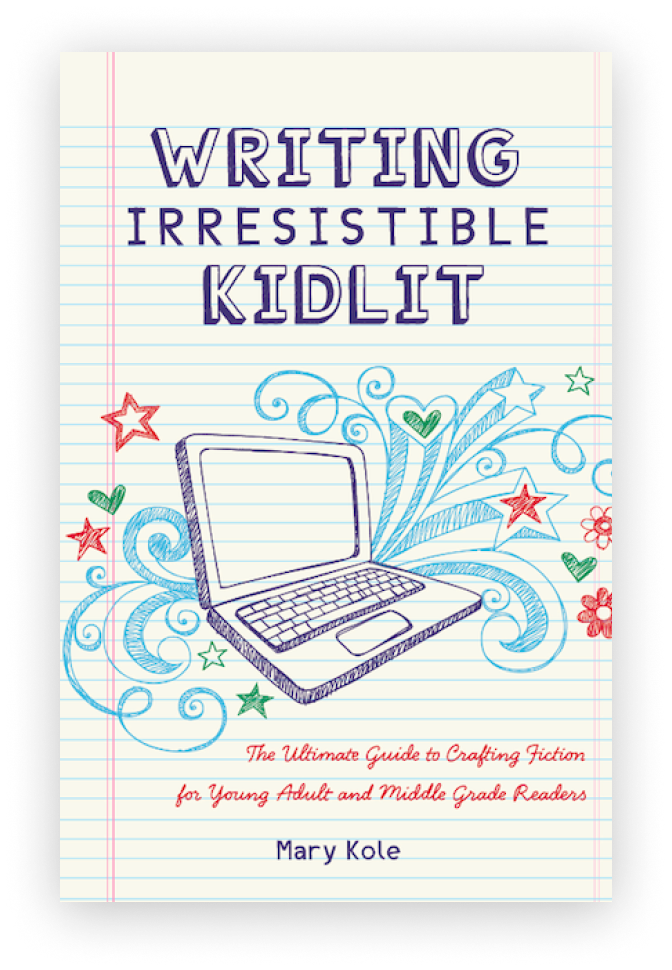Writing Your First Draft
By Mary Kole
Mary Kole is a former literary agent, freelance editor, writing teacher, author of Writing Irresistible Kidlit, and IP developer for major publishers, with over a decade in the publishing industry.
Writing a book can be a daunting task for anyone, no matter how well they know their craft. To make things even more difficult, starting a first draft can be a real challenge. The anxiety of writer’s block and the blank page can cut a promising book idea down before it has a chance to come alive. I believe that the first draft of a novel plays a crucial role in the creative writing process, and represents a really fun time in the lifecycle of a book idea. In this article, I’ll take you through the importance of the first draft, how to approach drafting, and provide tips and tricks to help you get through the process.
The Role of the First Draft in Fiction
A draft is simply a rough version of a written work that needs to be improved upon in revision. It’s often you telling the story to yourself, and will need a lot of additional work, even if you’ve done a lot of planning with a story framework ahead of time. This is a time of no rules and no pressure, and an opportunity for creative play. The first draft is an important first step that every writer must take to bring their book idea to life. First drafts are essential for discovering the story that you want to tell, as well as your character arc, plot arc, and themes. The first draft is also where you can let your creativity run wild as you play around with ideas, characters and plot points—that’s why it is okay to write badly or loosely at this stage. You can always fix things later, so ideally, this will take some of the pressure off.
Approaching the First Draft of a Novel
Before starting a first draft, it is important to set reasonable goals and a consistent writing schedule for yourself. Even if you don’t have a daily writing practice, you should set some kind of habit. Setting goals for word count, character development or plot points to aim for will provide you with direction and focus. A novel outline can be a very good brainstorming tool, especially as you set out to draft. Starting with a simple outline can also help you organize your thoughts and determine a clear direction for your story to take.
There are many tools available to help make the first draft of a novel all the more manageable. A writing app like Scrivener can help you stay organized, create an outline quickly, and track your progress. Writing prompts will also provide inspiration and motivation when you feel stuck.
Once you’ve started on your first draft, you’ll need to keep moving to get through it. The key is to stay on track by setting achievable goals and consistent writing sessions. A critique group or writing workshop can be helpful here, especially with accountability. Breaking the first draft into smaller chunks can help make the process more manageable. Once you’ve completed your first draft, give yourself a break before moving forward with the revision process.
Tips For Troubleshooting Common First Draft Issues
Writer’s block is a common issue writers face during the first draft of a novel. To combat this problem, it is important to take regular breaks, find inspiration from other sources, take some time away from the page, and change things up when you feel stuck. If you have a book outline handy, you can also skip around in the process, then come back to a difficult section of the story later. Remember that it is okay to refresh your mind and rekindle your writing passion. If you’re dragging through your first draft, that’s a sign that something is wrong. Address it sooner rather than later to get back on the right track.
While the first draft of a novel can be a daunting task, it is a crucial part of the creative process for any writer. Remember to set achievable goals and consistent writing schedules, and don't be afraid to experiment and play around. Most importantly, remember that the first draft is just a starting point, and the real work comes with future revisions. Keep going, keep writing, and you’ll create something amazing.

Click here to purchase Writing Irresistible Kidlit, my book on fiction craft for MG and YA novels, out from Writer's Digest Books. This will show you my writing craft philosophy and give you lots of valuable advice, including tips for the novel revision process and self-editing. There are over 35 example novels cited and discussed throughout. It’s a valuable resource for any writer’s toolkit.
Click here to purchase Irresistible Query Letters, my book on query letters, including over forty examples with comprehensive notes on each one. There’s a ton of submission advice, best practices, and insider information in these pages, and you’ll really enjoy seeing what other writers are doing in the slush.
Click here to purchase Writing Interiority: Crafting Irresistible Characters, my book on interiority and character creation. Explore your protagonist’s thoughts, feelings, reactions and interpretations, expectations, and inner struggles to create a rich, immersive experience. This guide will empower you to create characters who live and breathe on the page, fostering an unbreakable bond with your audience.





